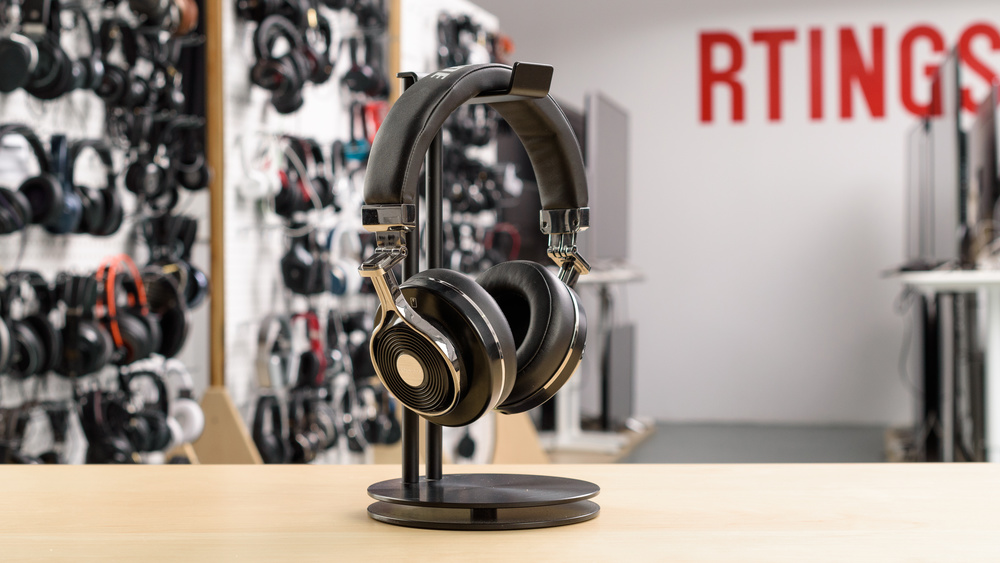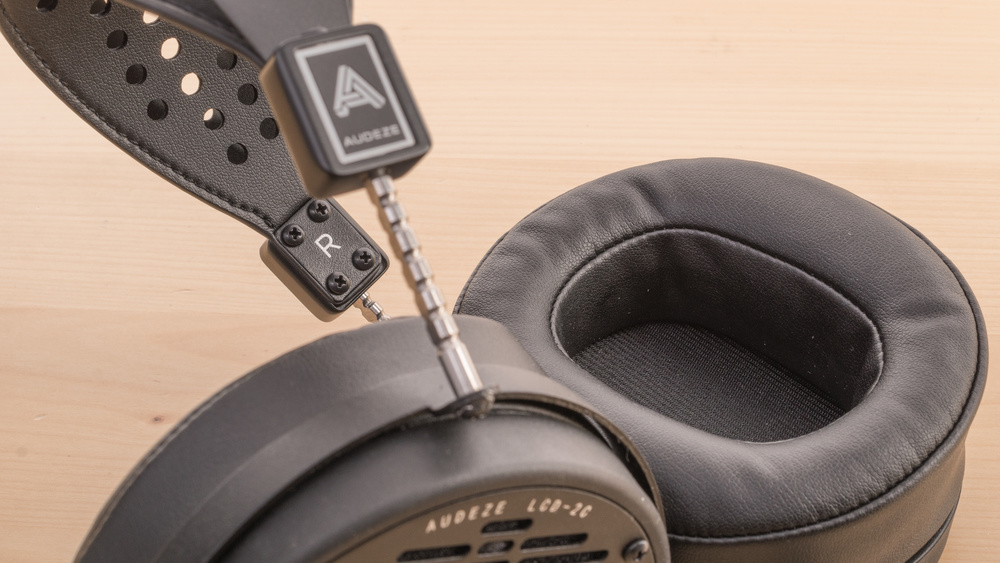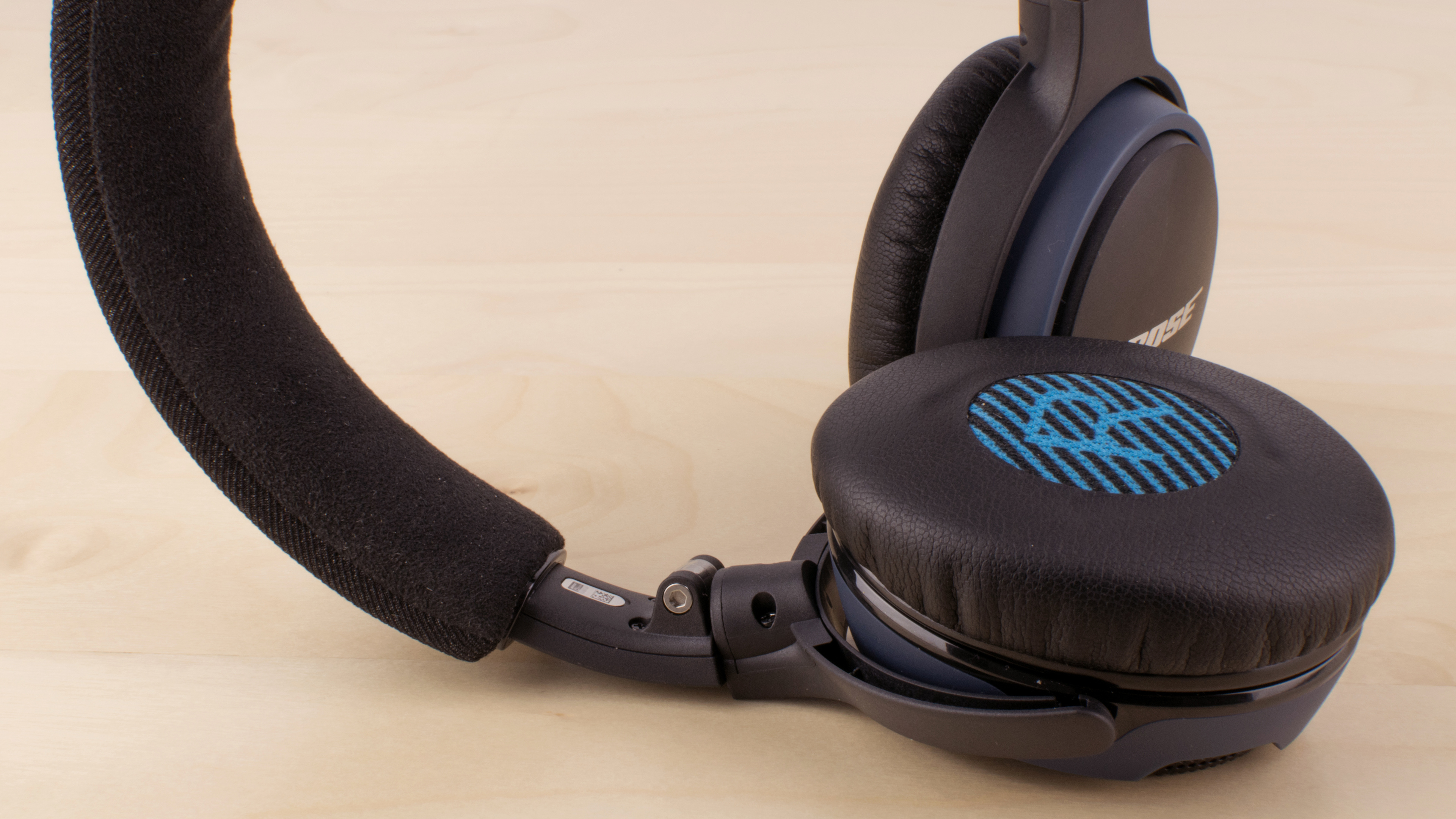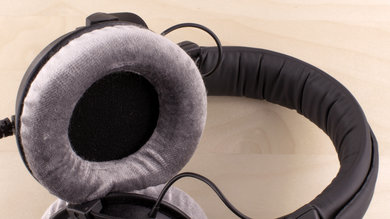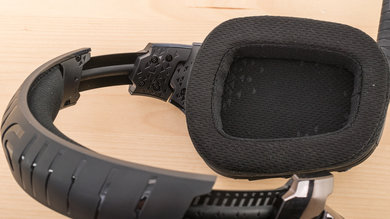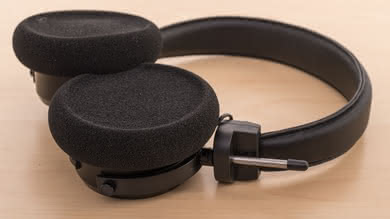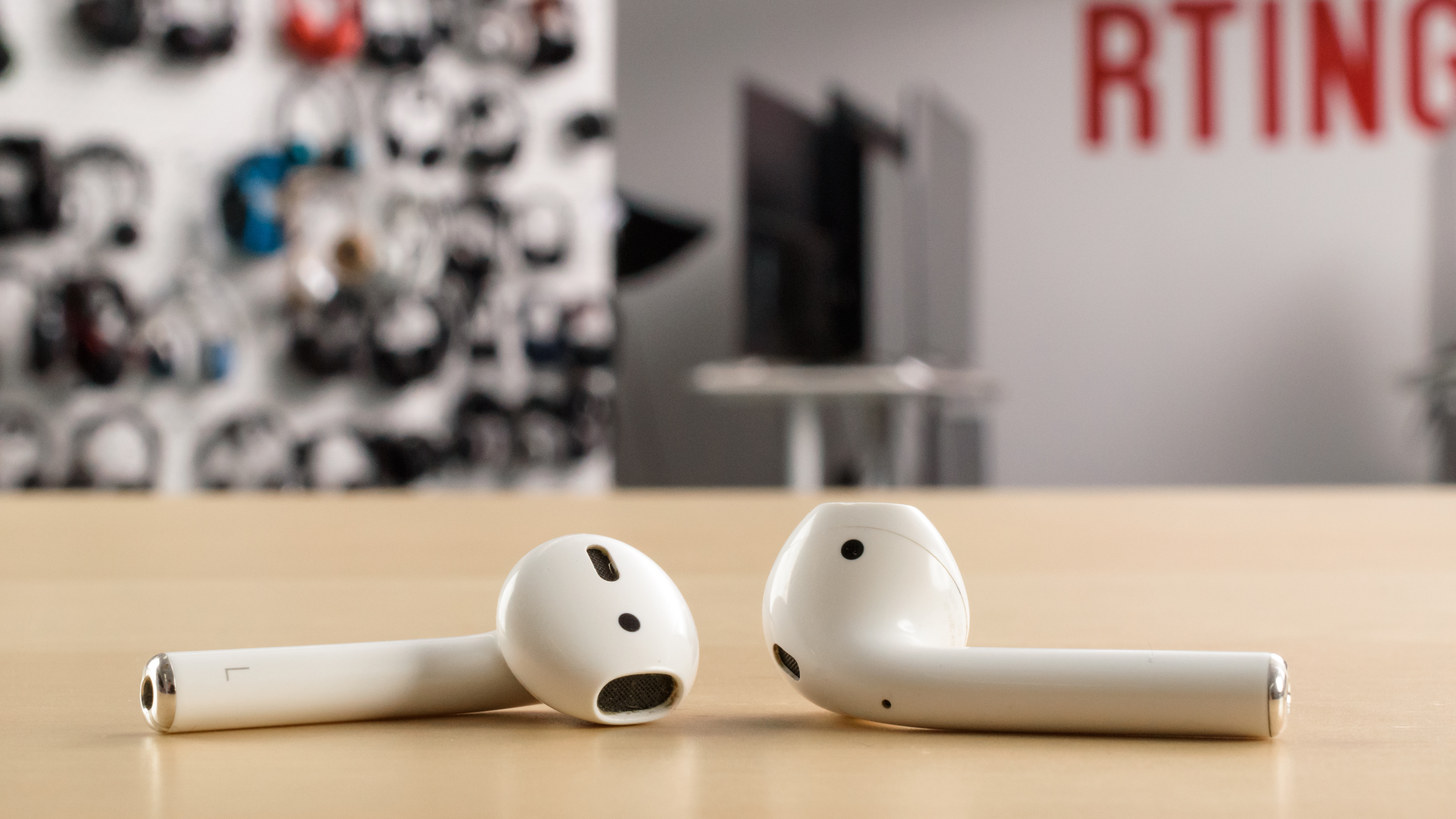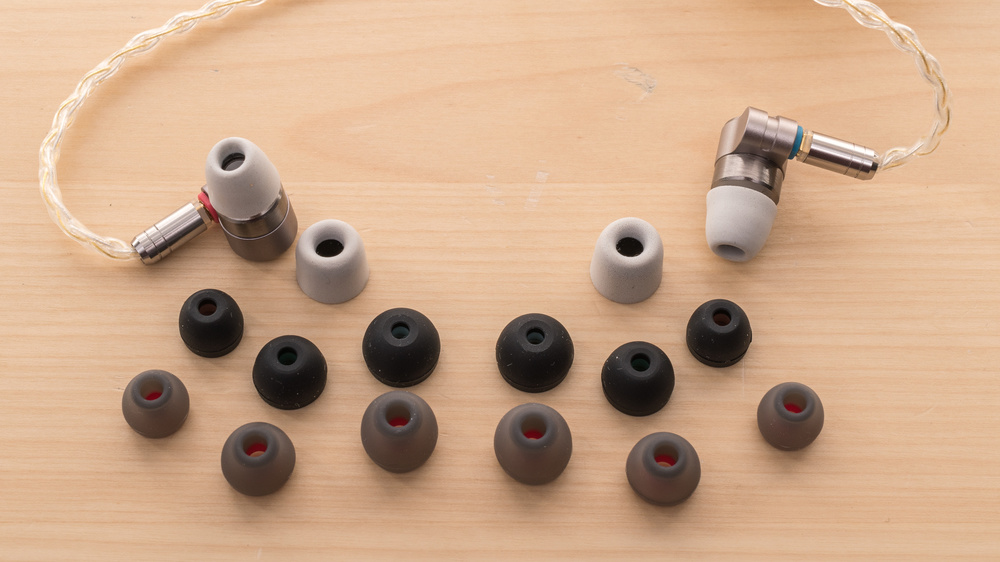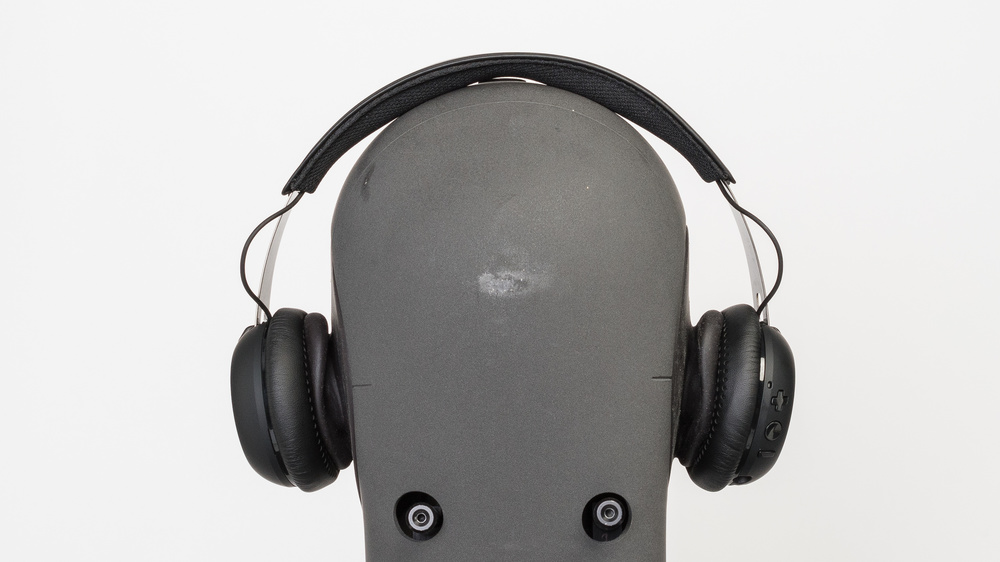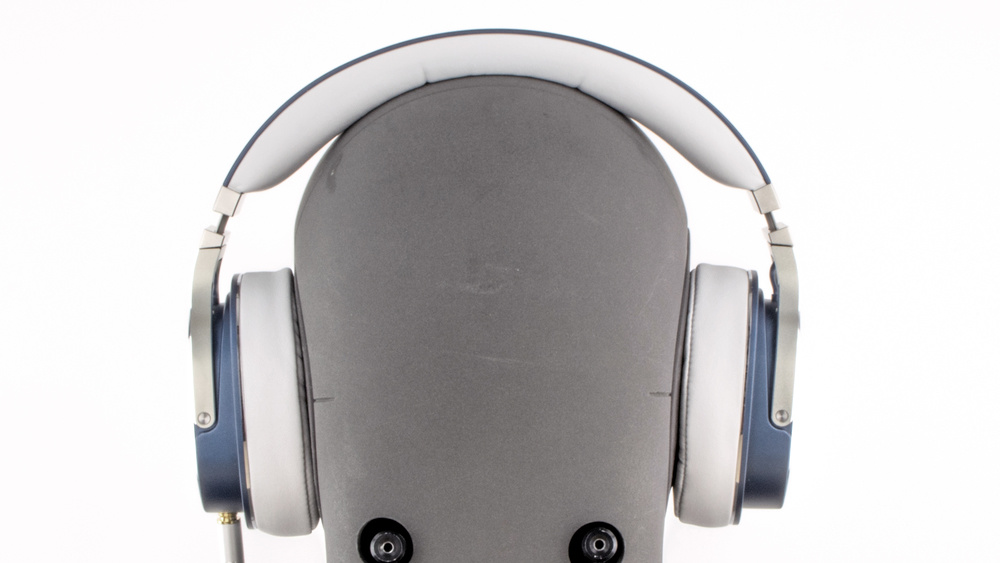Comfort relates to how pleasant and enjoyable headphones are to wear over an extended period of time. There are a couple of different types of headphones: over-ears and on-ears have frames that sit on top of the head and earcups that rest around or on the ears, while earbuds and in-ears are inserted into the ear to a varying degree of depth and sometimes have neckbands to keep them in place. Regardless of the type, comfortable headphones shouldn’t cause stress, fatigue, or pain, even after prolonged periods of use.
Comfort is subjective and tends to vary between individuals; however, there are certain design elements that most people tend to keep an eye out for. Weight, padding, headband tension, and frame tightness tend to influence how comfortable over-ear or on-ear headphones are, especially over long listening sessions. For earbuds and in-ears, how soft and flexible the earbuds are, how deep they protrude into the ear canal, and how much pressure they exert on the ear generally impact comfort as well.
We use a mixture of objective measurements and subjective tests in order to test comfort. We measure weight and clamping force objectively to give us data on how heavy and tight they are and then test the headphones on various people with different characteristics to estimate how pleasant the headphones might be to wear for a while. The sum of these experiences is taken into consideration and a comfort score is subjectively determined.
Test results
When it matters
Comfort affects your listening experience. An uncomfortable pair of headphones can prevent you from feeling fully immersed in your audio and may even cause soreness or pain. A lack of comfort is usually most noticeable over time, so comfort is crucial for those who tend to listen to long audiobooks or their favorite albums for hours without taking their headphones off.
Our Tests
Our comfort tests evaluate how the headphones feel while in use. Although weight and clamping force are objectively determined, the final comfort score is assigned based on the group consensus of the subjective tests.
The subjective testing group consists of 3 testers. To evaluate comfort, each tester puts on the headphones and notes their initial comfort level. The tester then assesses the weight of the headphones, the pressure applied to the head or ears, the sensation of the pads or earbuds on the skin, and the overall fit taking in consideration the shape and size of their head and ears. The group discuss their experiences and agrees on a final comfort score. The review writer then wears the headphones while writing the review to ensure this score is consistent over longer listening sessions.
Weight
Weight is measured both objectively and subjectively. First, we weigh the headphones with a digital scale. The cable remains attached but rests on the testing table instead of on the scale. We take note of the weight and then try on the headphones to see how they feel. We assess how noticeable the headphones feel when being used. Do they feel fatiguing or form pressure points over time? Are the headphones obtrusively bulky? Does their weight impact the pleasantness of a listening session?
Weight tends to influence the comfort of over-ear and on-ear headphones more than in-ears or earbuds. Headphones below 0.55lbs. are considered light and above 0.75lbs. are considered heavy.
Lightweight headphones generally score higher since they tend to apply less pressure to the top of the head. However, this depends on many other factors.
Lightweight headphones aren’t always the most comfortable, especially if they have stiff padding that doesn’t redistribute weight well. Even the heaviest headphones can be comfortable with ample padding.
Earbuds and in-ear headphones tend to have very lightweight designs; however, models with a neckband-design are generally a bit heavier and bulkier. Some find this added weight to be bothersome, especially when compared to the ultra-lightweight design of truly wireless earbuds, but it seldom impacts comfort.
The final comfort score does not take the objective weight measurement into account since the experience of weight can easily be altered by other ergonomic factors, like padding or earbud style, that are more readily measured subjectively.
Padding and Tactile Sensation
Padding is an extremely important element of comfort, especially for over-ear and on-ear headphones, which generally require padding under the headband and around earcups to help distribute pressure and reduce discomfort over time. We assess the feeling of the padding itself as well as the material covering the padding.
The best padding feels dense, thick, plushy, and uniform.
Poor padding feels thin, cheap, crinkly or bumpy.
We assign higher scores to headphones with padding coated in smooth, comfortable materials. Leather (synthetic or animal), velour, and microfibre padding tend to feel the best. They usually don’t irritate the skin and generally feel pleasing to use.
Mesh fabric, foam, or plastic padding can be coarser and more irritating.
For earbuds, soft flexible earbud tips tend to be more comfortable, but it’s possible for rigid plastic designs to feel nice too.
When it comes to in-ears, it's generally best to have access to different tip options like comply foam in addition to silicone tips. However, we currently place greater emphasis on other factors like earbud bulkiness when scoring in-ears, so models with many tip options may not score higher than those without.
Clamping Force, Tightness, and Tension
Like weight, we measure the clamping force of headphones objectively and subjectively. Since earbuds and in-ear headphones aren’t held in place by the tightness of a frame, we only measure the clamping force of over-ear and on-ear headphones. First, we place the headphones on a wooden stand with two digital scales secured to each side. We align the earcups so that pressure is properly distributed at the center of each scale. We turn on the scales and take note of the clamping force. Then, we try on the headphones to see how the tightness and tension feel. The ideal headphones fit securely without feeling too tight.
The clamping force exerted on the head by the stiffness of the frame is given a significant amount of consideration in scoring because of how uncomfortable and painful high tension can become during longer listening sessions.
That said, headphones have certain ergonomic factors that can offset the tension that headphones with a particularly high clamping force may cause. Furthermore, people with various head shapes and sizes are likely to perceive the tightness of headphones differently.
As with weight, the final the objective measurement of clamping force isn’t factored into the final comfort score since experiences of tightness and tension differ greatly between individuals and are more readily measured subjectively.
Although we don’t subject in-ear headphones or earbuds to our clamping force test, we still account for how much tension or pressure they exert within the outer ear as well as on the notches and concha of the outer ear. In our subjective measurements, we factor in how deeply the earbud tips protrude in the ear canal as well as how tight they feel inside the ear.
What Isn't Included
There are a couple of elements that we factor into the score if they're very notable or a major deal-breaker, but that we don't test for explicitly. These elements include:
- More specific ergonomic factors (cable management, headband adjustment, earbud tip options, range of motion, etc.)
- Earcup measurements (earcup dimension, depth, area of padding, etc.)
If you feel there is an item missing that should be included, please let us know in the Discussions below.
Conclusion
Overall, our comfort tests evaluate how physically pleasant headphones are while in use. Comfort is most important during longer listening sessions, as uncomfortable headphones may cause soreness and even pain. If you often use your headphones for long periods of time without taking them off, comfort is crucial, as it allows you to remain fully immersed in your audio. We score comfort subjectively by measuring the weight, padding, sensation, tightness, and tension of different headphones. Experiences with comfort vary between individuals, but the highest-scoring headphones in this category are those that really stand out and are found to be unanimously pleasing to use by all our testers.

